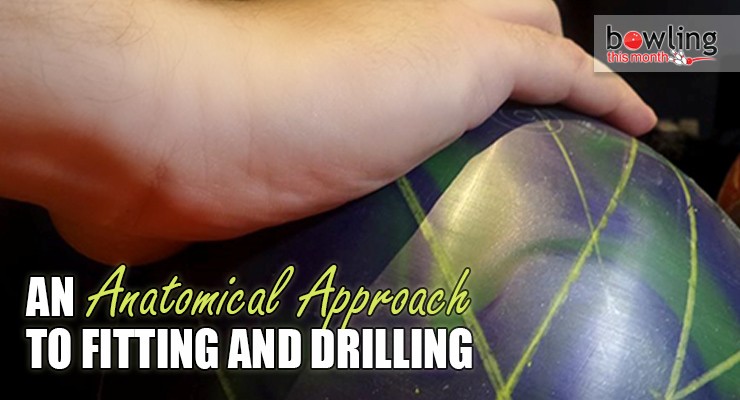Article Contents
- 1. The Anatomical Drilling Technique began with two observations
- 2. Which fingers influence gripping strength the most?
- 3. Anatomy of the thumb
- 4. Using these truths to develop the Anatomical Drilling Technique
- 5. The three elements of the Anatomical Drilling Technique (ADT)
- 5.1. Thumb-to-Finger Angle Anatomical Line (TFA)
- 5.2. Thumb-to-Ring Finger Anatomical Line (TRF)
- 5.3. More Lateral Thumb Pitch (LP)
- 6. Ease of use of the Anatomical Drilling Technique
- 7. Experience the Anatomical Drilling Technique at an IBPSIA pro shop
- 8. Conclusions
- 9. References
Note: This article is only available to Bowling This Month subscribers.
I recently devised an anatomically-guided fitting and drilling technique that I call the Anatomical Drilling Technique (ADT). With this grip, I believe the ball now feels like it is a natural extension of the hand. This fitting process was developed from reviewing the anatomy of the hand as well as researching how the hand naturally grips/grasps in an open position, such as when you are swinging and throwing a bowling ball.
With the ADT grip, the hand sits on the ball significantly better, reducing wrist tension and grip pressure and allowing a freer swing and cleaner release. There are also early reports that it has eliminated some pain and wrist discomfort both during and after bowling.
The Anatomical Drilling Technique began with two observations
I began work on the Anatomical Drilling Technique by thinking about how the hand sits and moves naturally in an open position. As you can see from the image, when the hand is in a normal open position, the thumb is outside the index finger and there is a substantial natural angle between the base of the thumb and the fingers. This angle is shown in the image by the two black dotted lines.
In sports science, the hand is split between the middle and ring finger into two sides: ulna on the pinky and ring side and radial on index and middle side. This naming convention emerged from the location of the lone forearm bones and the proximity of these bones to the hand. The ulna bone is located on the pinky side of the forearm and the radius bone is located on the thumb side. This is why a cocked wrist position is referred to as ulnar deviation.
To create a better fit, the grip should accommodate the natural angle from the base of the thumb to the center of the middle and ring finger. Historically, there have been efforts to adjust the ring finger line to accommodate this natural angle. For example, drillers have been using a Center Line Transposition (CLT) process for years. But, when observing the hand and reflecting on this anatomic reality, the angle of the base of the thumb through the finger line seemed larger than what had been traditionally utilized for CLT measurements. With this larger angular measurement, the fingers will face in a more natural position.
The sport of handball makes it easy to observe the orientation of the fingers and thumb when the hand is in an open gripping/grasping position. The circumference of a women’s ...
Already a premium member? Click here to log in.


 (Only
(Only 